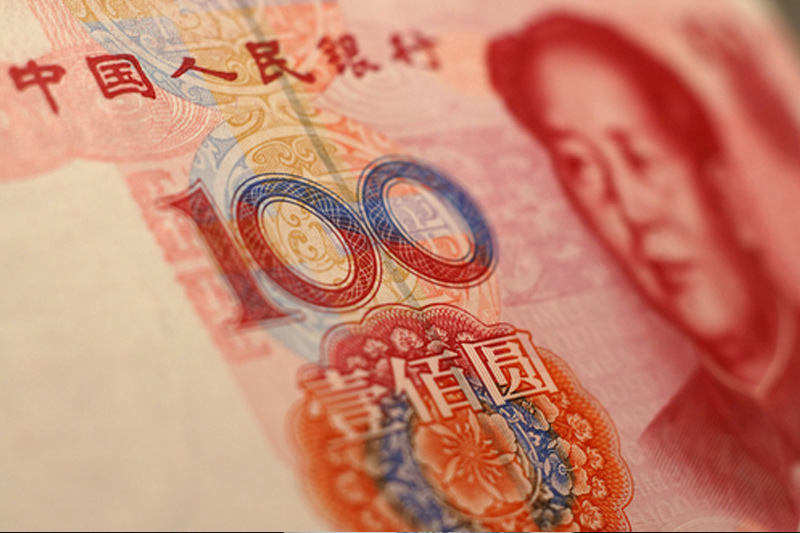(Bloomberg) -- Russia’s central bank almost tripled the yuan’s share in its foreign-exchange and gold assets, nearly matching the allocation for the Canadian dollar and leaving a fifth of its holdings invested in bullion and the Chinese currency.
The yuan’s proportion jumped to 2.8 percent in the last three months of 2017 from 1 percent in the third quarter, according to a report published on Monday by the Bank of Russia, which discloses the data with a half-year lag. That’s just short of the 3.1 percent for the Canadian dollar, or loonie as it’s known. The shares allocated to the U.S. dollar and the euro fell, while gold’s ratio exceeded 17 percent.
“The rise in the share of yuan assets, albeit still relatively small, reflects Russia’s intentions to diversify away from major currencies,” said Piotr Matys, an emerging-markets currency strategist at Rabobank in London. But “it will not be easy for Russia to significantly reduce the share of the dollar in its reserves given that the greenback is still one of the most liquid currencies.”
With the buying spree of almost $12 billion in the second half of last year, the push into yuan by Russia’s central bank moved at a much faster clip than a more incremental increase globally. The Chinese currency’s share reached only 1.4 percent of worldwide reserves in the first quarter, from 1.2 percent in the previous three months, according to the International Monetary Fund.
From the Bundesbank to the central bank of Kazakhstan, the yuan’s international status has grown since its acceptance in 2016 to the IMF’s reference basket of currencies, or Special Drawing Rights. But while the renminbi -- the official name of China’s currency -- first became part of the Bank of Russia’s holdings in 2015, its share remained negligible before last year.
Four years ago, the central banks of Russia and China agreed to a currency-swap deal to facilitate trade and investment between the two countries. Soon after, Russia’s central bank first invested 14.5 billion rubles ($228 million) in Chinese bonds.
While Russian policy makers haven’t explained their rationale for buying yuan, they highlighted the successes of the Chinese economy last year, accompanied by new rules that contributed to the renminbi’s appreciation against the U.S. dollar. Meanwhile, tighter control over the banking industry as well as higher short-term interest rates on providing liquidity led to higher yields on Chinese sovereign bonds, the Bank of Russia said.
The outlook has recently turned for the worse. The managed currency has slumped over 3 percent since mid-June -- among the worst performers in emerging markets -- as concern over a slowdown in the world’s second-largest economy collided with anxiety over the trade war with the U.S.
The bulk of the Bank of Russia’s assets, however, is still in the U.S. dollar, despite its proportion shrinking to 45.8 percent in the fourth quarter from 46.5 percent in the previous three months. The euro’s share reached 21.7 percent from 24.1 percent, according to the report.
The decision to reduce the euro’s share in favor of the U.S. dollar resulted from the growing difference in returns on American and European assets, the Bank of Russia said, pointing to the divergence of monetary policies between the Federal Reserve and the European Central Bank. President Vladimir Putin has said that a “break” from the dollar is necessary for Russia’s “economic sovereignty” amid sanctions, vowing that his country will continue to diversify its reserves.
